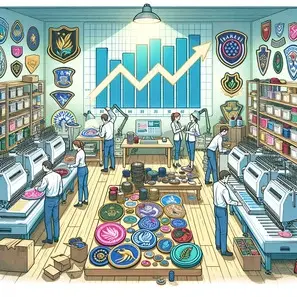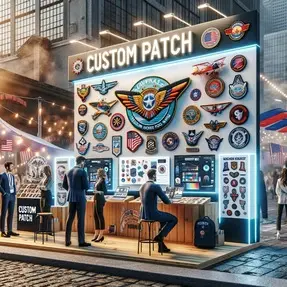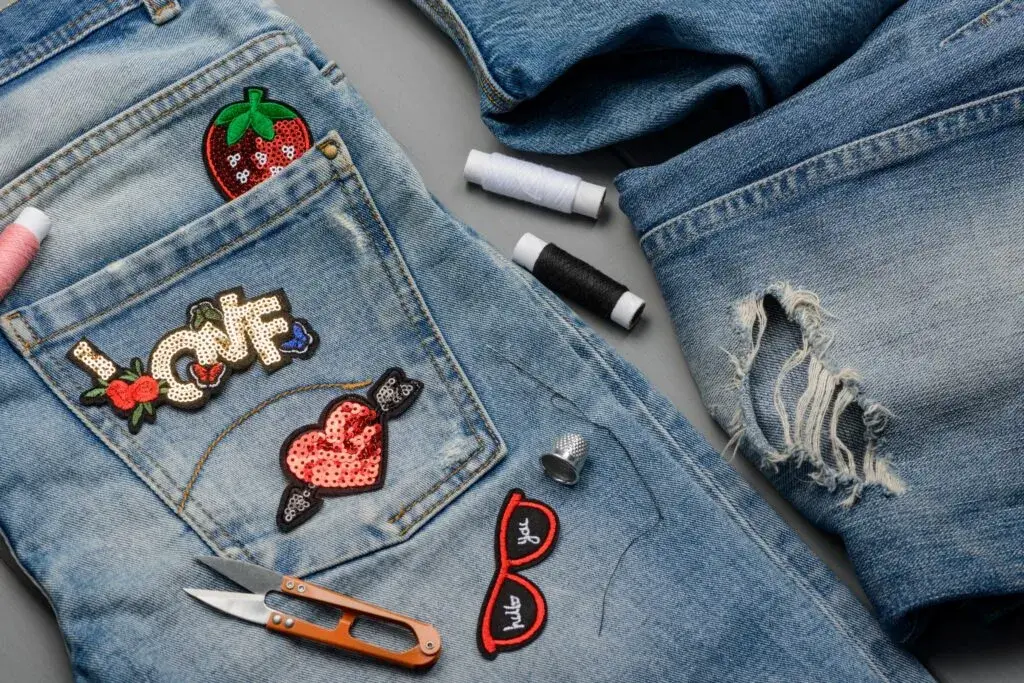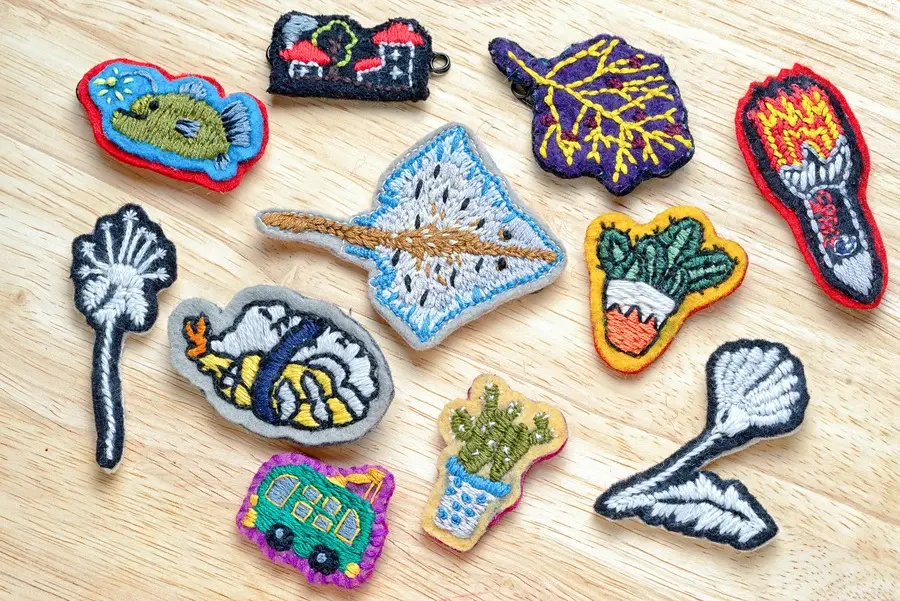Custom Patch Pricing – How Much Should You Sell Your Patches For?
Most small business owners have been stumped with this question – how much should I sell my product for? Putting a value on something you have put time, resources, and passion into can be confusing. There are so many things to consider and getting the price point right can make or break your business. So, for those who are about to get their patch business off the ground, we’ve put together some pointers to help you create a custom patch pricing strategy that will work for you.

Understanding Profit Margins
Before you can set your custom patch prices, you need to understand how to calculate your profit margins. A profit margin is the difference between the cost of producing a product and the price at which it is sold. This will be your revenue after paying all expenses.
Some factors that may affect your patch profit margins are:
- Cost of materials/production. The cost of fabric, thread, backing material, and any other supplies you use to create your patches. If you’re partnering with a manufacturer, then their cost per unit will replace your material cost.
- Labor costs. If you have employees or outsource production, their wages and fees will need to be factored into your pricing strategy. If you’re just starting out and you’re a one-person show, you’ll need to consider the time and effort you put into designing and selling your patches.
- Shipping and packaging. Don’t forget to include the cost of shipping your patches to customers, as well as packaging materials such as envelopes or boxes.
- Overhead expenses. These are the costs associated with running your business, such as rent, utilities, and marketing. These may not directly relate to creating and selling your product but still need to be factored into your pricing strategy.
Once you have a clear understanding of your profit margins, you can start setting prices that will cover all these costs and leave room for profit. You might decide “I’m going to mark up my patches by 50%.” However, that might not be feasible if your costs are high or your target market is price-sensitive. As a new business, you may need to experiment with different pricing strategies before finding the right balance.
Do Patches Have High Profit Margins?
Absolutely! Selling custom patches can actually be quite a lucrative business model with high profit margins, and here’s why. Most patches have low production costs, especially when they’re ordered in bulk. This low cost opens up a significant room for markup, especially when you consider the added niche appeal these patches can have. It’s this blend of low production costs and high perceived value that can make patches a goldmine if you’re prepared to put the effort into marketing them.
And even if you’re a small business, it’s relatively easy to break even and start making a profit by selling patches. It doesn’t take many resources to start a custom patch business. Once you have a dedicated customer base, the profits can be substantial. The key is to find the right balance between cost, quality, and perceived value which can differ from niche to niche.
How To Set Your Custom Patch Pricing
How high or how low you decide to set your prices will depend on several factors. There is no one “ideal” price for custom patches. Ultimately, it comes down to what you think your audience will be willing to pay. But to get you started, here are some tips to help you set your custom patch prices.
Take a Look at Your Competitors
This is one of the simplest ways to get an idea of what the going rate is for custom patches. Take a look at other patch businesses and see what they charge. This will give you a benchmark to work with and help you understand how much people are willing to pay for your product.
But don’t just blindly follow your competitors’ prices – make sure you factor in the quality of their patches, their production methods, and any other differentiating factors. It’s also useful to look at both the big players in the market, as well as smaller businesses, to get a better understanding of price ranges.
Let’s take, for example, indie patch seller Strange Ways. Most of their patches sell for around $7.99, with more premium designs going for $15.99. Meanwhile, the popular alternative fashion chain Hot Topic sells their patches for $6.90 each, with a “buy two, get one free” deal on their full range of patches and pins. As a larger chain store, Hot Topic can afford to offer their patches for less. Knowing what your audience is willing to pay, as well as the standard market prices, will help you set a competitive yet profitable price for your custom patches.

Factor in Your Production Model
We all know custom patches cost money to make, but how much exactly depends on how you make them. There are a few different ways to produce custom patches – some companies create their patches in-house, while others outsource to manufacturers or print-on-demand partners.
Producing patches in-house gives you more control over the quality and timeline of your products, but it also requires a large investment in equipment, materials, and labor. On the other hand, outsourcing to a manufacturer gives you access to specialized machinery and expertise, without any additional investment. It’s also far easier to calculate your production costs and you can design your own patch with complete control over the size, shape, and style.
Meanwhile, print-on-demand partners allow you to create and sell custom patches without any upfront costs. However, they typically take a significant cut of the sales, which can affect your profit margins. You also won’t have as much control over the design itself, which means the patch will be less unique compared to other methods of production. This, in turn, can lower the perceived value of your product.
When weighing up which production model to use, a custom manufacturer is usually the most cost-effective option for producing large volumes of unique patches. You can boost your profit margins even further if you order custom patches in bulk. This can reduce the per-unit cost of custom patches significantly. For example, if you order 200 embroidered patches from THE/STUDIO, it will reduce the cost per patch to just $0.61.
Consider The Type of Patches You’re Selling
Your prices will also be affected by the type of patches you’re selling. Certain types of patches command a higher price point. This is for two reasons – the cost of production and the perceived value of the patch itself.
For example, embroidered patches tend to cost more than woven patches because they require more advanced machinery and materials. Similarly, bullion patches cost significantly more to produce than any other type of patch, so they’ll be priced at a premium.
The perceived value of the patch itself can also impact the price you can charge. For instance, if you’re selling patches for a popular sports team or brand, customers may be willing to pay more for them due to the emotional connection they have with the design.
Generic and basic designs won’t command as high a price point. The “uniqueness” factor is a big driver in the perceived value of patches. This is why custom-made patches are often priced higher than ones made using a pre-designed template.
Think About Where Will You Sell Your Patches
Where you will sell your patches affects your pricing strategy as well. If you sell custom patches online, then you might have to think about the cost of running your website. Do you have to pay a hosting fee? Will you have a social media presence? Social media can be costly if you outsource it or time-consuming if you do it yourself
If you sell your patches in a physical storefront, then rent and utilities will play a role in determining the price of your patches. Additionally, if you’re selling in person at events or craft fairs, you’ll have to factor in the cost of participating in those events. These additional costs will need to be factored into the overall pricing of your patches.

Your Shipping Strategy and Its Impact on Pricing
You might already have a general idea of where you will ship your patches. However, the cost of shipping can vary significantly depending on the distance, weight, and size of your package. Luckily, patches are generally small and lightweight, which can help keep shipping costs low.
But you still need to consider whether you will include the shipping cost in your custom patch prices or if you will charge a separate shipping fee. There are pros and cons to both options. Including shipping in the price may make your patches appear more expensive. However, charging a separate fee might deter customers who are looking for a quick and easy purchase.
If you can find a cheap and affordable shipping option, such as flat-rate envelopes or boxes, it might be worth including the cost in your patch price to simplify the purchasing process for your customers. However, if you are unable to find a cost-effective shipping solution, then charging a separate fee may be necessary. You may decide that you can ship for “free” to certain locations (such as within your country of residence) but charge a separate fee for international orders.
You also have to consider the time it takes to ship your patches, especially if you are sending them internationally. Customers will likely be willing to pay more for faster shipping options, so this might be something you could offer for a higher fee.
Who Is Your Audience?
Every business owner knows the importance of identifying and understanding their target audience. Different demographics have different preferences and spending habits. For example, if you’re selling custom patches for clothing geared towards younger individuals who might not have a lot of disposable income, you may want to keep your pricing on the lower end.
But if your personalized patches appeal to a more affluent demographic with a higher disposable income, you may be able to charge more for your patches. Understanding your audience can also help you determine the best marketing strategies and platforms to reach them.
It’s also important to keep in mind that there are different types of patch collectors, such as military veterans, hobbyists, and fashion enthusiasts. Each group may have different preferences when it comes to purchasing patches. This is why comparing your prices to other patch sellers in the same niche or market can be helpful.
Special Deals and Limited Editions
Your prices won’t be set in stone and often it’s a good idea to offer special deals or limited-edition patches. This not only creates excitement and urgency among potential customers but also allows you to test out different pricing strategies.
For example, offering a “buy one get one free” deal can attract more sales and increase brand awareness. Creating limited edition patches with unique designs or themes can also drive up demand and allow you to charge a higher price.
Just be sure to carefully consider the costs and potential profits when planning these special deals or limited editions. You don’t want to offer something that will cause you to lose money in the long run.

Will You Pay for Marketing?
Nearly every business needs to invest in some form of marketing. Even the best custom patch company won’t be able to thrive solely on word of mouth or organic reach.
Marketing these days can take many forms – from social media ads to influencer partnerships to Google ads. The costs can vary widely depending on the type of marketing strategy you decide to go for. The platform you choose to advertise on also has an effect.
And even though the cost of marketing may seem far removed from the cost of producing patches, it’s important to factor it into your pricing. Ultimately, marketing efforts should bring in enough revenue to cover those costs and also generate a profit. If you’re throwing money into marketing and not seeing results, it may reduce the overall profitability of your patch business. So just be aware of the potential costs and returns when developing your marketing strategy!
Start Cheap, Test, and Adjust
As exciting as it is to imagine the profits rolling in, it’s important to not set your prices too high right off the bat. Starting with lower prices allows you to test the market and see how well customers are receiving your patches.
If your personalized patches are selling well and receiving positive feedback, then you can gradually increase the price. Similarly, if your initial pricing strategy does not result in enough sales, it may be time to adjust and lower your prices.
Regularly monitoring and adjusting your custom patch prices strategy can help you find the sweet spot that maximizes profits while still appealing to customers. It might seem a bit tricky at first, but over time you’ll get a feel for the market. You’ll also have a better idea of what people are willing to pay for your product. If you build a big name for yourself and your patches become highly sought after, you can start asking for a premium price.
Partner with THE/STUDIO
We understand how important it is to be able to make a profit and grow your business. This is why we’ve made our custom patches so affordable. Not only do we offer competitive pricing, but we also offer custom patches with no minimum order quantity. So if you’re just looking to test the waters, you can do so without investing too much upfront. If you’d like to take it a step further, we also offer bulk discounts for larger orders. This is great for businesses that are looking to stock up on inventory and lower their overall cost per patch.
Take a look at our custom patches to learn more about our pricing and how we can help you turn your patch business into a success!
FAQs
How much does it cost to make a patch?
The cost of producing a patch can vary widely based on several factors. This includes the size, complexity of the design, type of embroidery, and the quantity being produced. For a custom woven patch, production costs can start as low as $0.47 per patch for larger bulk orders. However, other types of patches like bullion, leather and PVC can cost significantly more – between $2.27 and $9.31 per patch.
Can you make money selling patches?
Yes, selling custom patches can be a profitable business. Given the relatively low production costs, especially when ordering in bulk, there is significant potential for high-profit margins. Targeting the right audience and pricing your products competitively can help you build a profitable patch business.
Is there a market for patches?
Definitely! The market for custom patches is diverse and thriving. It includes various groups like sports teams, bikers, niche fandoms, businesses, alternative fashion enthusiasts, collectors, and organizations looking for branded merchandise. The indie patch community in particular has seen a surge in popularity. Now many small businesses and artists are starting to join in on the trend.
How much should I charge for embroidery patches?
Pricing your embroidery patches involves considering several factors. This includes your production costs, the perceived value of your patches, and your target market’s price sensitivity. A good starting point is to mark up your cost of production by at least 2x to 3x. However, you could go higher based on the uniqueness and demand for your designs. For reference, smaller companies might charge anywhere from $5 to $15 for custom patches. Larger brands can command higher prices due to their brand value. Ultimately, your prices should reflect the quality of your patches, your brand positioning, and what the market is willing to pay.




